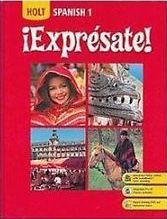
All Solutions
Page 255: 36
The example model reads:
*dishes (to put on the floor/to put on the table)
Don’t put them on the floor! Put them on the table!*
*No **la** laves en… (Don’t wash it in…)
Láva**la** en… (Wash it in…)*
The example model reads:
*dishes (to put on the floor/to put on the table)
Don’t put them on the floor! Put them on the table!*
*No **los** uses para… (Don’t use them for…)
Úsa**los** para… (Use them for…)*
The example model reads:
*dishes (to put on the floor/to put on the table)
Don’t put them on the floor! Put them on the table!*
*No **las** limpies con… (Don’t clean them with…)
Límpia**las** con… (Clean them with…)*
The example model reads:
*dishes (to put on the floor/to put on the table)
Don’t put them on the floor! Put them on the table!*
*No **la** pases en… (Don’t vacuum the…)
Pása**la** en… (Vacuum the…)*
The example model reads:
*dishes (to put on the floor/to put on the table)
Don’t put them on the floor! Put them on the table!*
*No **la** pongas en… (Don’t put it on…)
Pon**la** en… (Put it on…)*
Note that in the negative command, the direct object pronoun “la” comes between “no” and the verb, while in the affirmative command, it comes attached to the end of the verb.
The example model reads:
*dishes (to put on the floor/to put on the table)
Don’t put them on the floor! Put them on the table!*
*No **los** hagas con… (Don’t make them with…)
Haz**los** con… (Make them with…)*
Note that in the negative command, the direct object pronoun “los” comes between “no” and the verb, while in the affirmative command, it comes attached to the end of the verb.
The example model reads:
*dishes (to put on the floor/to put on the table)
Don’t put them on the floor! Put them on the table!*
*No **lo** comas… (Don’t eat it with…)
Cóme**lo** con… (Eat it with…)*

